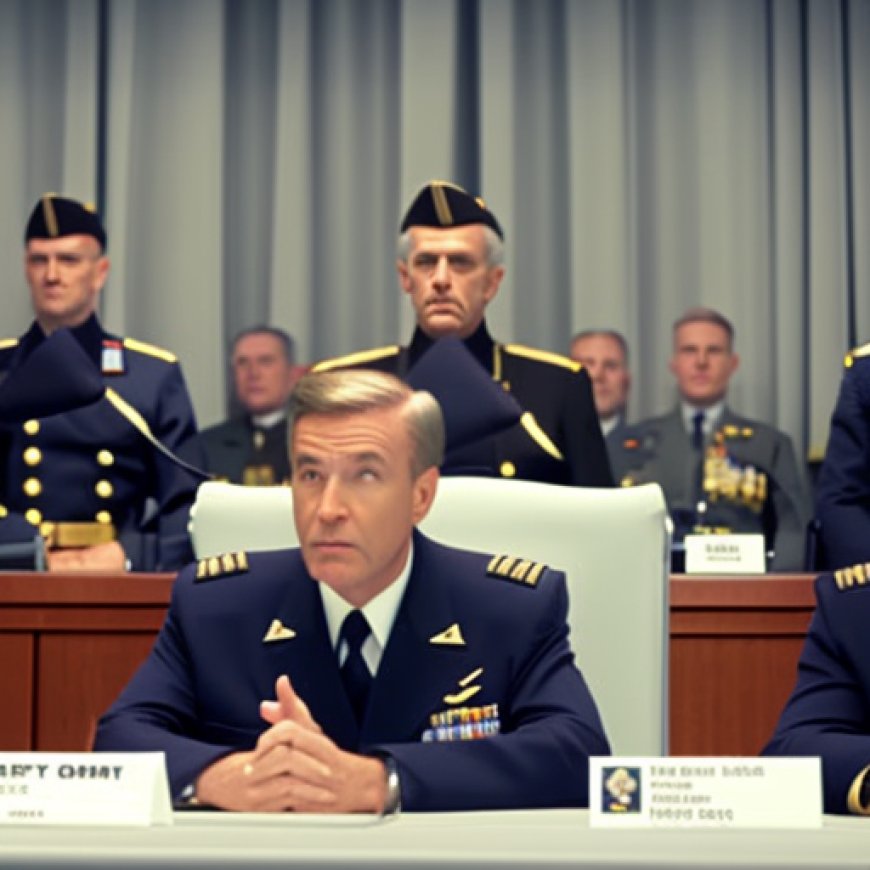Top admirals might testify as unflattering details emerge in Navy bribery case


Investigation Reveals Allegations of Bribery Involving Navy Officials

Introduction
Recent court documents reveal that eight current or former Navy officials, including five admirals, may be called upon to testify in a bribery case against the Navy’s former second-highest-ranking official, Adm. Robert P. Burke. The case involves allegations of a spurned lover and an illicit deal made between Burke and two executives of a New York company, Charlie Kim and Meghan Messenger.
Details of the Case
Burke is accused of awarding a sole source contract to Kim and Messenger’s technology services firm, Next Jump, in exchange for a $500,000-a-year post-retirement job and stock options. All parties involved have pleaded not guilty, questioning the logic of offering such a high-paying job for a relatively smaller contract award.
Key Witness and Allegations
The court documents shed light on a key witness in the case, referred to as “Person 3,” who is alleged to have been in a romantic relationship with Burke. Person 3 attended a crucial lunch meeting where the plan to award the contract to Next Jump was discussed, with Kim sketching the proposal on a napkin. However, Burke’s defense team claims that Person 3 mischaracterized the interaction due to personal reasons.
Subpoenas and Defense Strategies
The executives, Kim and Messenger, have recently obtained permission to issue trial subpoenas to several Navy officials, including Person 3, in an attempt to challenge the government’s version of events and prove that there was no bribery scheme. They argue that Next Jump had a preexisting engagement with the Navy, which undermines the allegations against them.
Legal Consequences
All three defendants face charges of conspiracy to commit bribery and bribery, which carry a maximum penalty of 20 years in prison. Burke also faces additional charges of performing acts affecting a personal financial interest and concealing material facts, punishable by up to 30 years. The defense teams for the executives assert that they relied on Burke’s advice to ensure the legality of their actions.
Conclusion
The case continues to unfold, with both sides presenting their arguments and challenging the credibility of witnesses. The outcome of this trial will have significant implications for the Navy and its commitment to the Sustainable Development Goals (SDGs), particularly Goal 16: Peace, Justice, and Strong Institutions.
SDGs, Targets, and Indicators Analysis
1. Which SDGs are addressed or connected to the issues highlighted in the article?
- SDG 16: Peace, Justice, and Strong Institutions
The article discusses a bribery case involving Navy officials, which relates to the goal of promoting peace, justice, and strong institutions.
2. What specific targets under those SDGs can be identified based on the article’s content?
- Target 16.5: Substantially reduce corruption and bribery in all their forms
The article highlights a bribery case against Navy officials, indicating a violation of the target to reduce corruption and bribery.
3. Are there any indicators mentioned or implied in the article that can be used to measure progress towards the identified targets?
- No specific indicators are mentioned in the article.
The article does not provide specific indicators to measure progress towards reducing corruption and bribery. However, indicators such as the number of bribery cases investigated, the number of convictions, or the amount of recovered assets could be relevant indicators for measuring progress.
Table: SDGs, Targets, and Indicators
| SDGs | Targets | Indicators |
|---|---|---|
| SDG 16: Peace, Justice, and Strong Institutions | Target 16.5: Substantially reduce corruption and bribery in all their forms | No specific indicators mentioned in the article |
Source: washingtonpost.com








